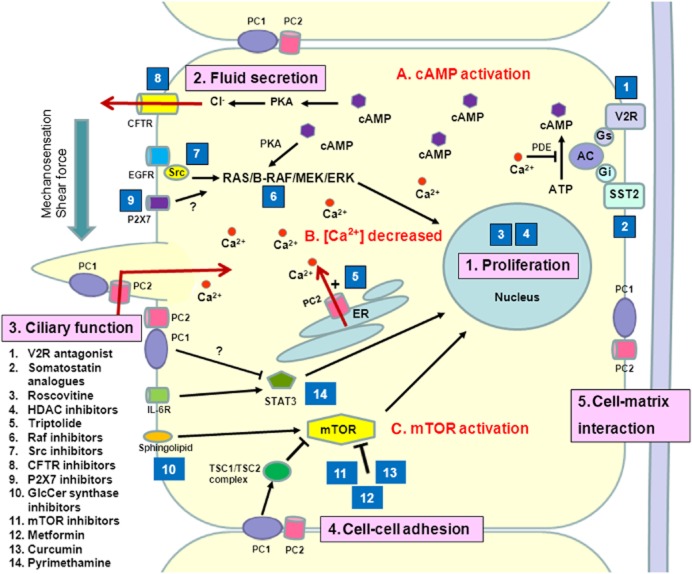Figure 1.
Schematic illustration of the key mechanisms of ADPKD pathogenesis and targets of potential treatments. Polycystin-1 and polycystin-2 expressed in different subcellular locations and regulate (1) proliferation, (2) fluid secretion, (3) ciliary function, (4) cell-cell adhesion and (5) cell-matrix interaction of renal epithelial cells. Dysfunction of polycystin-1 or polycystin-2 results to aberrant signalling pathways including: (A) activation of cAMP, (B) decreased intracellular calcium concentrtions and (C) activation of mTOR. These changes lead to transformation of normal cells to a ‘cystic phenotype’ and promote cyst formation. The targets of candidate drugs are depicted as blue boxes. Abbreviations: CFTR, cystic fibrosis transmembrane regulator; ER, endoplasmic reticulum; ERK, extracellular-signal regulated kinase; GlcCer, glucosylceramide; HDAC, histone deacetylase; IL-6R, interleukin-6 receptor; MEK, mitogen-activated protein kinase; mTOR, the mammalian target of rapamycin; PC, polycystin; PDE, phosphodiesterase; PKA, protein kinase A; SR, somatostatin receptor; TSC, tuberous sclerosis;V2R, vasopressin V2 receptor

